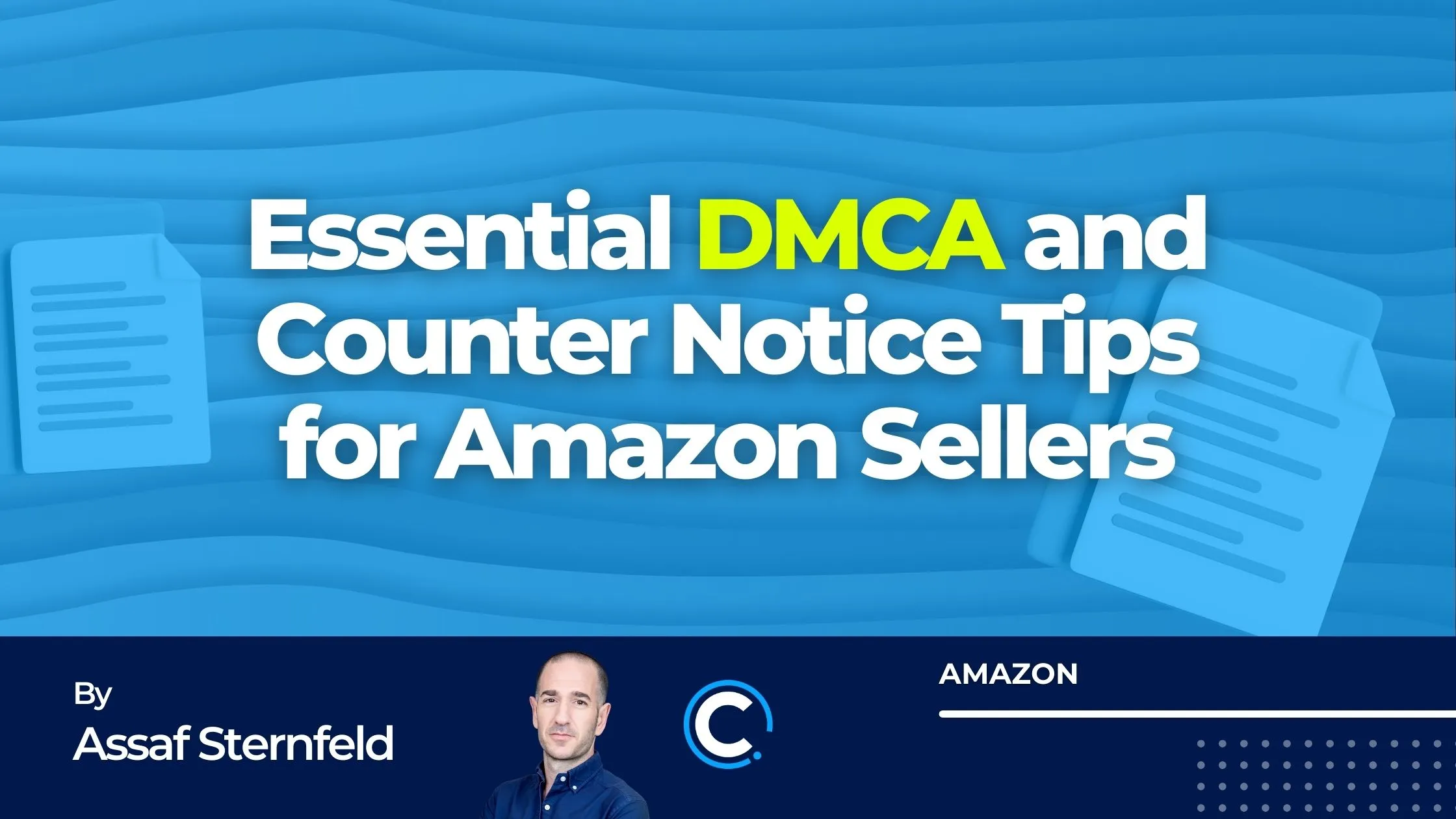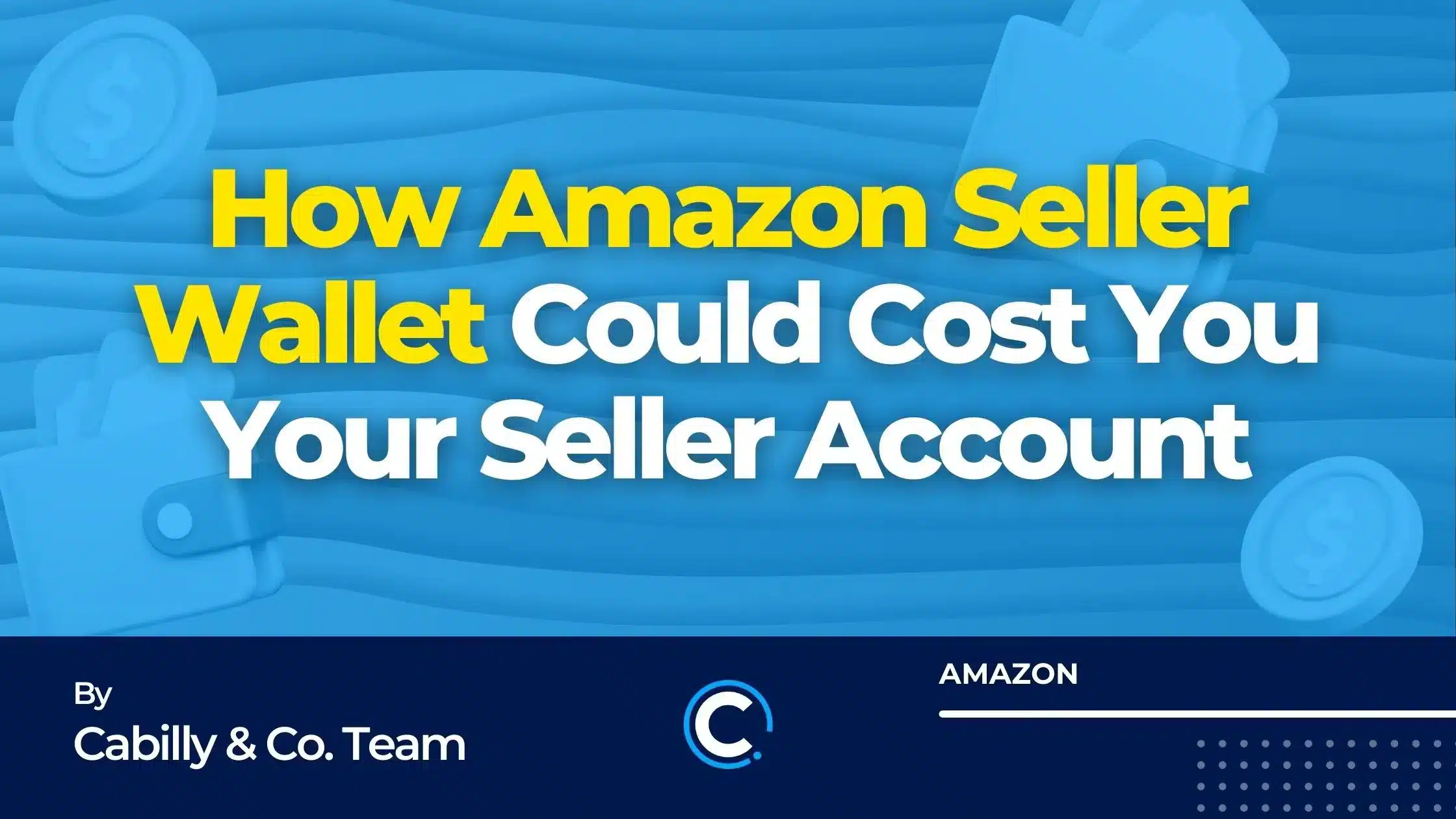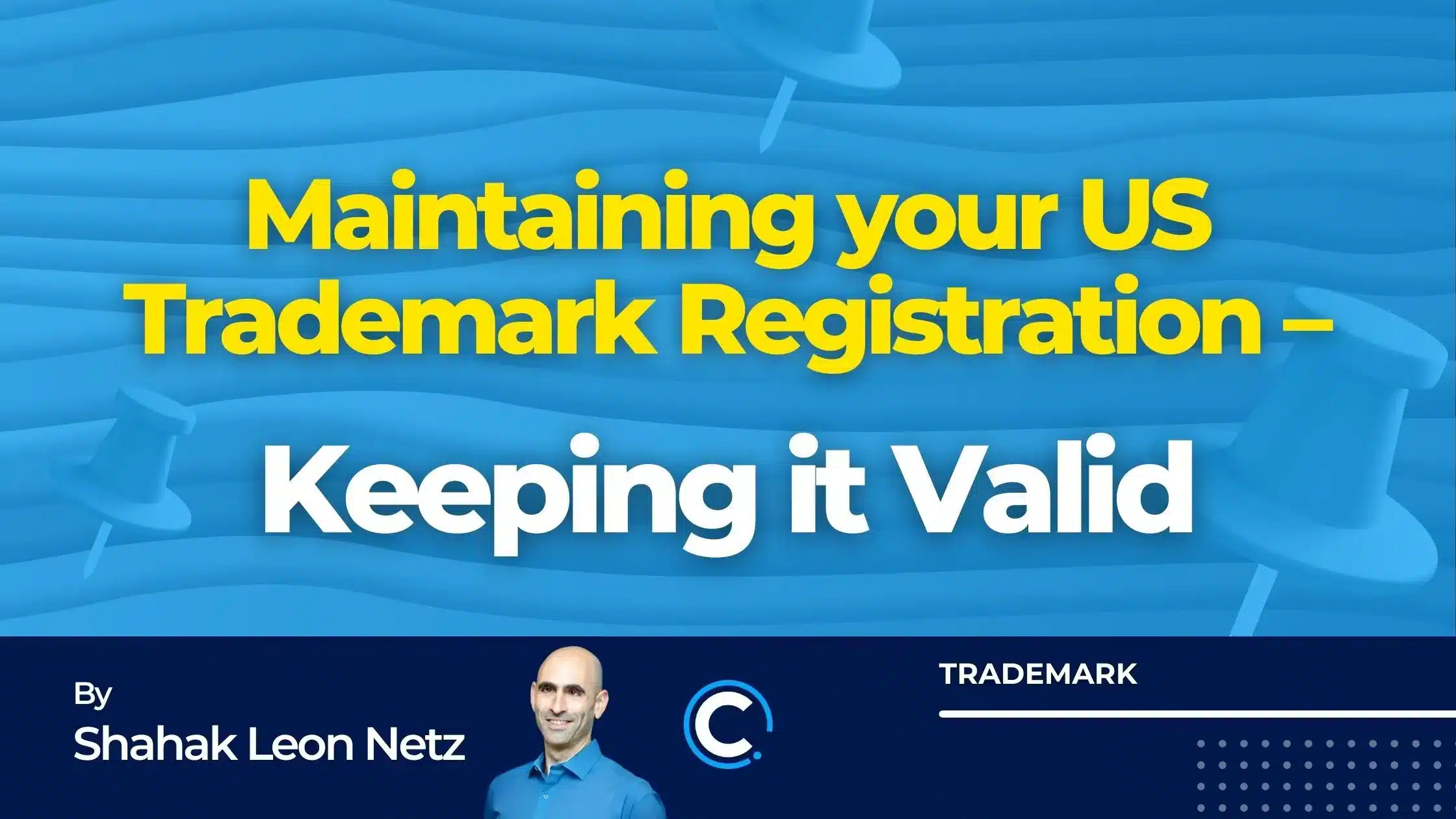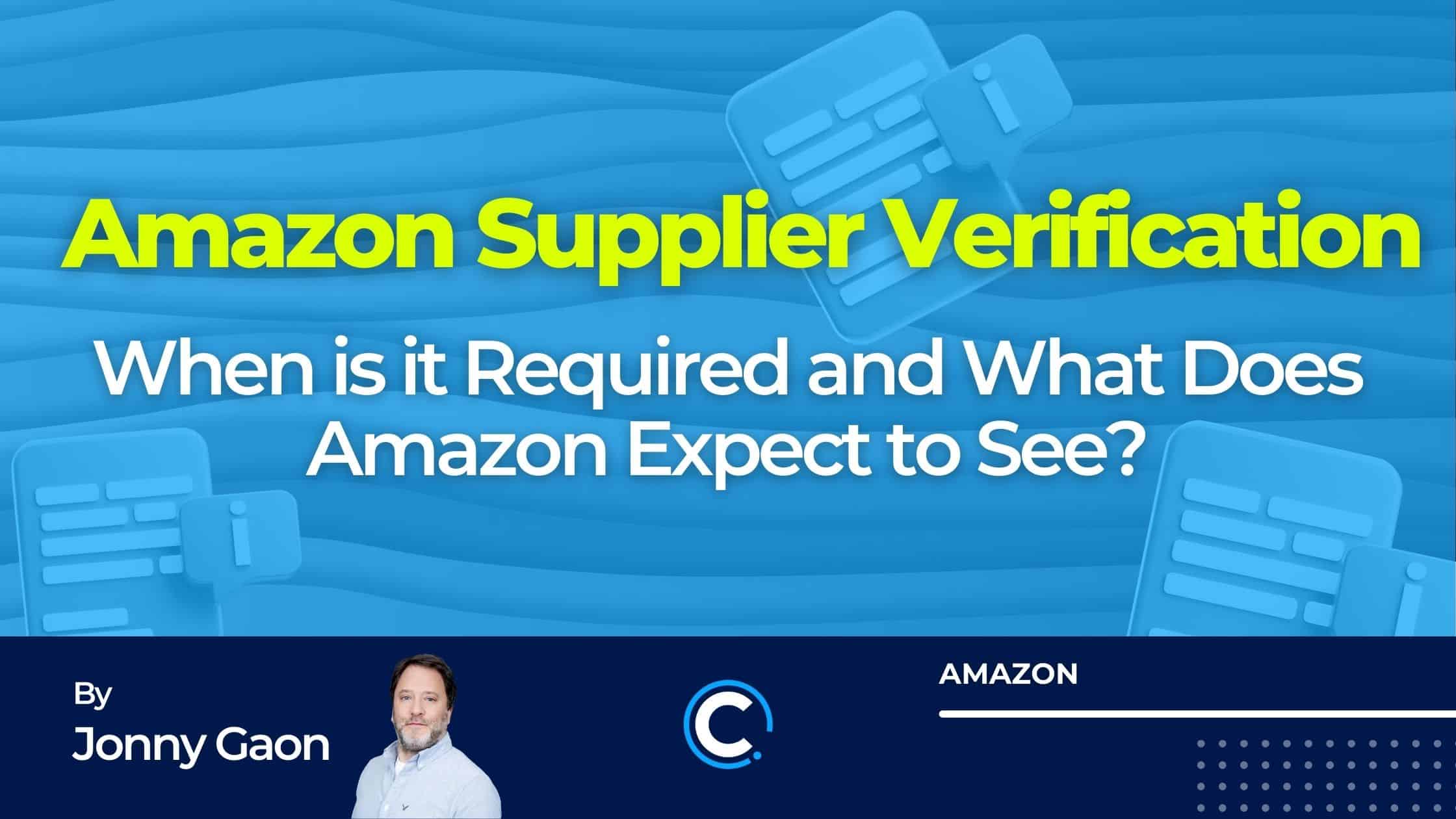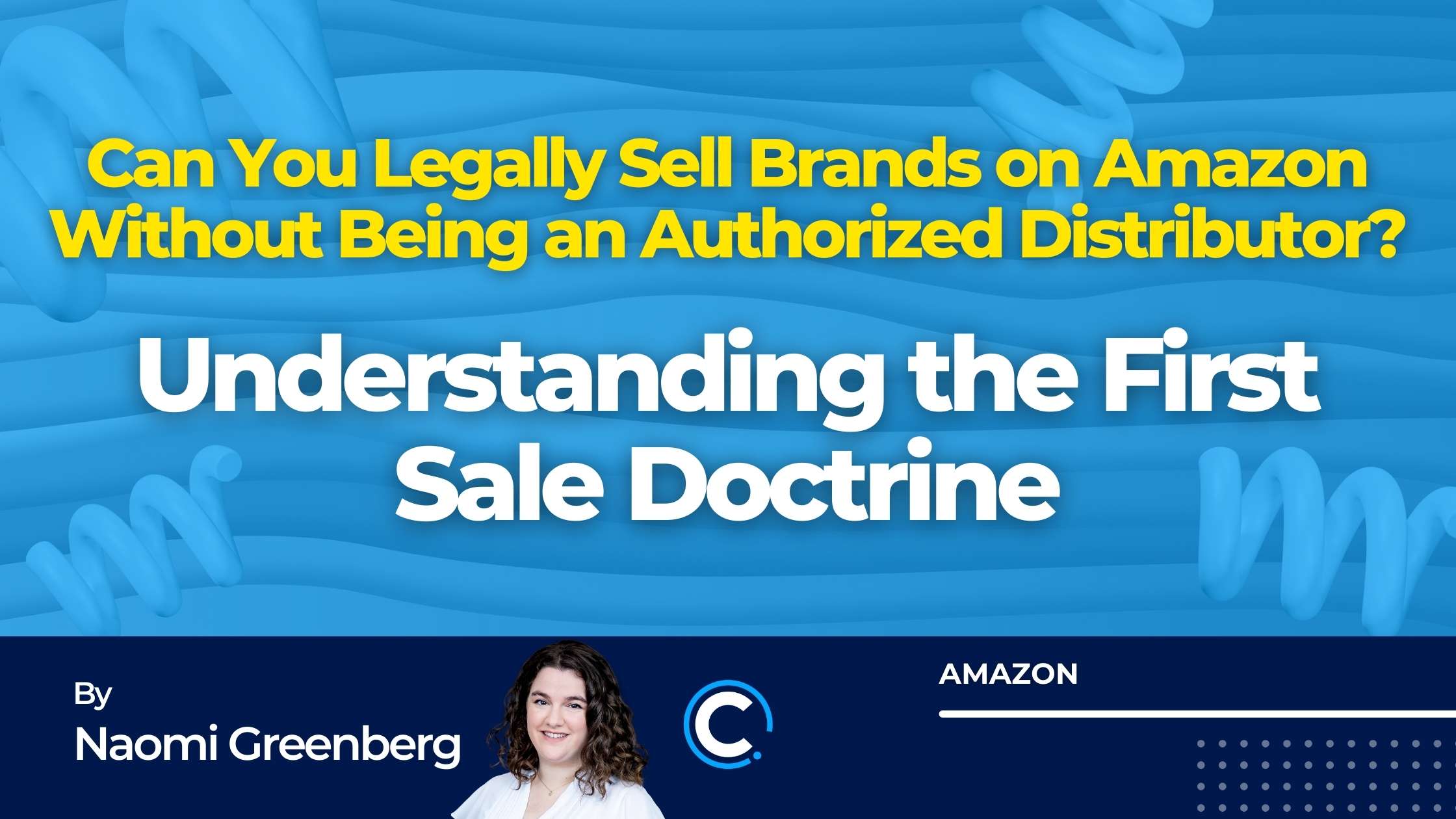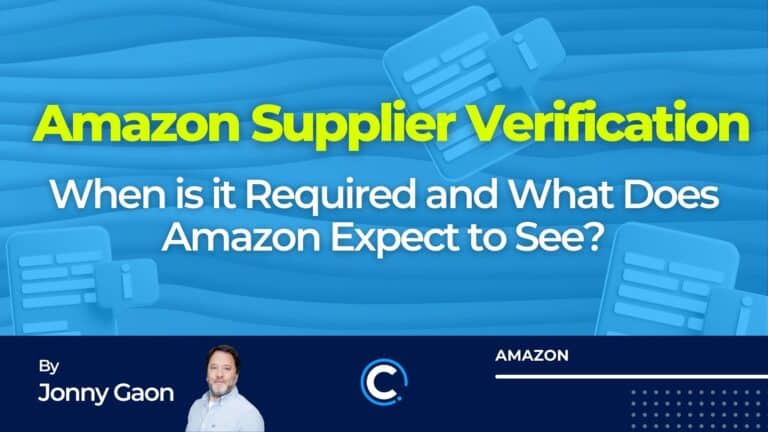
Table of Contents
More than 60% of sales on Amazon comprising over 4 billion items per year, are made by third-party sellers. In order to maintain product standards and customer trust, Amazon must constantly verify that the products being offered are authentic, safe, and compliant with local regulations. As we discussed in an earlier blog post, Amazon routinely verifies seller information, however supplier verification is another extremely common process that Amazon uses to maintain standards.
Every third-party seller on Amazon will have been asked to pass some form of supplier verification at some point, and for high volume sellers, this can be an almost day-to-day event. Being prepared and knowing what Amazon needs in advance, is the best way to avoid listing closures, lost sales and account deactivations.
Whether Amazon needs you to demonstrate the authenticity of a single product, or your account has been deactivated under suspicion of selling counterfeit goods, you will have to prove that your suppliers are sufficiently trustworthy that Amazon can be confident that the products sourced from them are genuine.
What triggers supplier verification requests?
The most common triggers are buyer complaints which include words like “fake”, “inauthentic”, “not genuine”, etc.., or received IP complaints from a rights owner. An important part of any successful appeal will be proving that your products are authentic and demonstrating good sourcing.
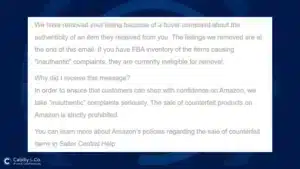
These types of complaints can also trigger FBA Inventory reviews, which are more straightforward to pass, as an appeal or POA is not usually required.
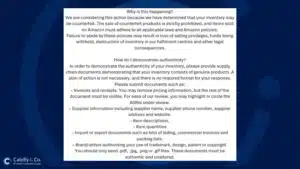
Ultimately, if multiple or repeated complaints are received, or if you are unable to pass these supplier verification reviews, there is a significant danger of Amazon deactivating your account.
A more serious (and increasingly common) demand for supplier verification is a “Section 3” account deactivation (Section 3 of Amazon’s Business Solutions Agreement relates to how and why Amazon can terminate or suspend your selling account). Amazon may claim that they have reason to believe you are selling counterfeit items, or that you have engaged in “deceptive or fraudulent, or illegal activity”, though it is often unclear what has led Amazon to make such allegations. Appeals for such reviews require much more extensive documentation, in addition to the usual invoices and supplier information. Amazon may request shipping and import documents, proof of delivery showing the items were shipped from your supplier to the address on the invoices, proof of transactions matching your invoices, letters or authorization from the supplier or brand, as well as ID documents for you and your company.
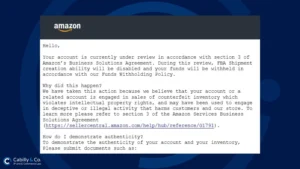
Ultimately, providing supplier information and documents that meet Amazon’s requirements, and in the correct formats, will be a big part of successfully navigating any such review.
What is a “Verifiable Supplier”?
Amazon needs to be confident that your supplier is sufficiently trustworthy to allow products sourced from them to be sold on their platform. The documents and information they will want to see can vary depending on the type of supplier you work with.
Most sellers fall into one of the following categories:
- Have their private label products manufactured and supplied by a factory.
- Source directly from the brand itself.
- Source from an authorized distributor for the brand.
- Source from a wholesaler or unofficial distributor of the brand.
If you have your own private label brand, Amazon will want to see that your products are produced for you in a satisfactory manufacturing facility. Providing the manufacturer’s website, physical location, reviews, or a declaration signed by the manufacturer are common ways of showing this. Depending on the facility and product, providing their ISO certification, a certificate of Good Manufacturing Practice (GMP), FDA registration, or other independent testing or certification can be very useful. Of course, Amazon will want to see that the information provided matches the information on your invoices.
If you source directly from the brand, your invoices should be enough to pass most reviews, but a short letter of authorization from the brand to the legal entity of your store is even better. Note that even with such documentation, Amazon may contact the brand to confirm that the documents are correct and have not been altered, so you should provide a contact person that can do this if needed.
Amazon will consider a supplier to be verifiable if you can prove that they are officially authorized to distribute the brand. This can be done by providing the brand’s letter of authorization to the supplier, showing that the supplier is listed as an official distributor on the brand’s website, or by providing Amazon with supply chain documents such as invoices from the brand to the supplier, alongside the invoices from the supplier to your company. If the supplier is authorized but you don’t have any of the above, a signed declaration, or even an email from them confirming their status can be shown to Amazon.
However, if your supplier is not an official distributor, things can be more difficult, and the chances of success will be lower. If you can provide supply chain documentation showing that your supplier originally purchased the products from an authorized source, these can be used. Otherwise, you will have to be more creative in convincing Amazon that your supplier is an established and reputable business, for example showing an established website, that they are authorized for other well-known brands, or have a brick-and-mortar store. However, this may not be enough to successfully pass a review and prove to Amazon’s satisfaction that your items are authentic.
What Supplier Information Should be Provided in an Appeal?
A short introduction, detailing your supplier’s activities, how long they have been in business (if well established) and any industry awards or accreditations they may have, is a good way to start.
Next, provide their full contact details: full business name and any alternate names, their registered business address, their website (which should be secured, ie: the url should start with https), telephone and fax numbers, email address, the name and contact details of an account manager or contact person, if available, and then any extra corroborating links, such as google reviews, LinkedIn, Facebook page, etc… All information should match your invoices and if the information is different, you will need to explain any inconsistencies.
Amazon will usually ask you to provide invoices covering all sales in a specific time period, or units of inventory, so it is usually a good idea to state these numbers, and then confirm how many units are shown in your invoices.
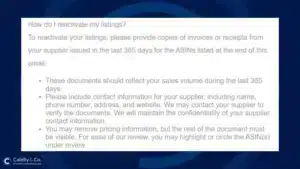
What your invoices and documents should show and how to present them to Amazon:
Amazon has very specific requirements for the format and presentation of supporting documents, and seemingly innocuous things can cause your documents and appeal to be rejected. The information below highlights some, but not all, of Amazon’s requirements for invoices and other supplier verification documents.
The most important thing to underline is that under no circumstances should you make any changes to the documents yourself. All documents should be the original, unaltered documents provided by the supplier. If Amazon suspects that you have provided tampered documents, this can lead to a permanent deactivation that is extremely difficult to reverse.
Amazon does say that you can redact or block any pricing information, but this should not be done digitally. For most documents, it is best to print in high quality, redact in pen by hand, then scan to pdf. If any changes are required, they should be made for you by the issuer of the invoice and if Amazon has been sent the document prior to the changes, a declaration needs to be included from the issuer stating that they made the changes themselves.
Invoices should look professional, be on the company’s letterhead with their logo, and include their full business name, official address, phone number, fax, email address and website. If you have a contact person or account manager, their name and contact details can also be included.
Amazon does not like tax, commercial or pro forma invoices, and the invoice number should preferably not be a date, (eg: 01012023).
The buyer information should include the legal entity (or store name) as seen in your Amazon account info page, and your business address and contact details. The ”ship to” address can be different, for example your warehouse address.
The products should be listed with clear descriptions and model numbers, that match the Amazon listing as closely as possible. Including identifiers such as a UPC is also preferred.
Finally, the invoice should include a company stamp, say “paid in full”, or show some other indication that it has been paid.
Once again, these are only some of the things Amazon checks for when they assess your documents.
Conclusion
Having to pass some kind of supplier verification review is a near certainty for all third-party sellers on Amazon. Choosing your suppliers carefully and making sure they provide you with documents that meet Amazon’s expectations will greatly increase your chances of success, and significantly reduce any potential damage to your sales and business.
Legal Disclaimer: The articles published on our platform are for informational purposes only and do not constitute legal advice in any form. They are not intended to be a substitute for professional legal counsel. For any legal matters, it is essential to consult with us or a qualified attorney who can provide advice tailored to your specific situation. Reliance on any information provided in these articles is solely at your own risk.

